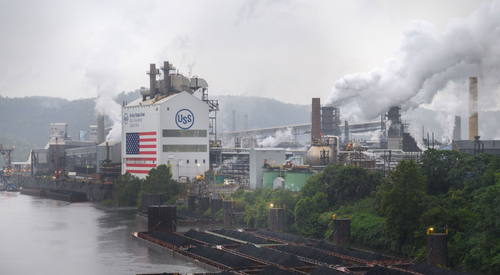Base Metals
Getting serious about water
Black & Veatch experts sat down with Australian Mining to discuss the emerging challenges with securing water for mine sites. Water is …
Australian…

Black & Veatch experts sat down with Australian Mining to discuss the emerging challenges with securing water for mine sites.
Water is fundamental to life on earth, and its role in the mining industry is no less salient. It plays an integral role in the processing and treatment of ore, among other areas.
But a warming climate presents issues for mine sites when it comes to responsible water stewardship.
Black & Veatch’s business development director Mike Russell explained some of the trends the engineering, procurement, consulting and construction company was seeing in the mining industry.
“Water has historically been a low priority for mines, but it’s becoming more critical for companies as an essential part of producing their end product,” Russell said.
“We’re seeing more companies wanting to move away from relying on rainfall and stormwater collection to climate-independent sources such as seawater or brackish groundwater, using tailored water treatment and desalination to secure that water supply.
“As Australia’s mining sector moves to capture the green energy revolution with better quality iron ore, lithium and more, there is an increased demand on the quantity and quality of water.”

Green minerals and metals often require more treatment and processing, which means mine sites need better water, and more of it, than ever.
Remote inland operations face their own set of challenges.
“We’ve seen quite a few industrial hubs cropping up in various areas of Australia; suddenly there are multiple industries operating in an area, so there’s a lot more competition for a water source, not only between projects but also with the urban provider,” Russell said.
“There is a big ESG (environmental, social and governance) aspect to this, as well. Clients are having to really consider their environmental footprint in terms of what impact it’s going to have on the groundwater resource, local communities, and other industries in the region.”
The weight of this situation was demonstrated when Black & Veatch built a major seaside desalination plant in Chile for the Escondida Water Supply Project, providing almost 216 million litres of water to the world’s largest copper mine each day.
“With the mine up in the Atacama Desert, it was very restricted on water supply, with a lot of competition for the limited water resource,” Black & Veatch water treatment section head Dr Srinivas Veerapaneni said.
“Taking it from the ground would have devastating impacts on the people and environment, so the project was aimed at creating a climate-independent water supply through seawater desalination.
“We did all the preliminary work right through to the detailed design and the commissioning of that plant. We were invited back to expand that desalination plant a number of years later.”
While some sites battle too little water, others face excess.
“The iron ore sector in the Pilbara faces a unique challenge, which is mining below the water table,” Russell said.
“Not only do you have to worry about removing water to access your orebody, but you’ve suddenly got the additional issue of figuring out what to do with the surplus.”
Mining operations also create waste streams from treatment processing, such as tailings, which would traditionally be stored in dams. Miners are now searching for creative alternatives when it comes to reusing excess water.
“Waste stream disposal is a very significant issue for any inland site,” Russell said. “I recently worked on a project at an inland desalination plant where the site was trying to figure out how to dispose of the salty water created from the desalination process.
“We determined that their only option was to go down a zero-liquid-discharge pathway. It’s expensive, but it means the site can now operate without restriction. We’re exploring similar zero-discharge technologies for tailings dams.
“Desalination projects for seawater and brackish water are the core of what we do. We have significant experience in the engineering, procurement and delivery of these large-scale projects.”
Pairing expertise with a technology-agnostic approach, Black & Veatch considers each project’s individual needs before deciding on a course of action. This method allows the company to determine the best technology for each application and bring value to projects through careful planning, risk mitigation and forward-thinking solutions.
This feature appeared in the October 2023 issue of Australian Mining.

White House Prepares For “Serious Scrutiny” Of Nippon-US Steel Deal
White House Prepares For "Serious Scrutiny" Of Nippon-US Steel Deal
National Economic Adviser Lael Brainard published a statement Thursday…
How to Apply for FAFSA
Students and families will see a redesigned FAFSA this year. Here’s how to fill it out.
Dolly Varden consolidates Big Bulk copper-gold porphyry by acquiring southern-portion claims – Richard Mills
2023.12.22
Dolly Varden Silver’s (TSXV:DV, OTCQX:DOLLF) stock price shot up 16 cents for a gain of 20% Thursday, after announcing a consolidation of…








